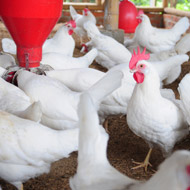
H5N2 found in US for the first time in 14 months
A devastating strain of avian influenza has been found in Alaska, the US Department of Agriculture (USDA) has confirmed. The news has prompted poultry farmers to review their protocols.
On Friday, the USDA announced that it had detected the H5N2 strain of the disease in a wild duck as part of surveillance testing. According to news agency Reuters, the strain has not been seen in any poultry or wild birds in the USA since June 2015.
In light of the discovery, the USDA has advised all farmers and companies involved in poultry production to review their protocols for cleaning and security to ensure the health of their birds.
While birds can transmit the virus to poultry through their feathers or faeces, the U.S Centers for Disease Control and Prevention considers the risk of infection to the general public to be low.
In 2015, the US Department of Agriculture confirmed the presence of avian influenza in wild birds in Whatcom County, Washington.
Reuters say the outbreak cost poultry exporters millions of dollars in lost business as trading partners limited deals from states and countries with infected flocks.
The outbreak also led to the death of about 50 million US chickens and turkeys and sent egg prices to record highs.



 The BSAVA has opened submissions for the BSAVA Clinical Research Abstracts 2026.
The BSAVA has opened submissions for the BSAVA Clinical Research Abstracts 2026.